- Home
- Graham Hancock
Fingerprints of the Gods Page 20
Fingerprints of the Gods Read online
Page 20
culture, tradition or genre. They seemed to be without antecedents either
in the New World or in the Old.
They seemed rootless ... and that, of course, was impossible, because
all forms of artistic expression have roots somewhere.
Hypothetical third party
It occurred to me that one plausible explanation might lie in a variant of
the ‘hypothetical third party’ theory originally put forward by a number of
leading Egyptologists to explain one of the great puzzles of Egyptian
history and chronology.
The archaeological evidence suggested that rather than developing
slowly and painfully, as is normal with human societies, the civilization of
Ancient Egypt, like that of the Olmecs, emerged all at once and fully
formed. Indeed, the period of transition from primitive to advanced
society appears to have been so short that it makes no kind of historical
sense. Technological skills that should have taken hundreds or even
thousands of years to evolve were brought into use almost overnight—
and with no apparent antecedents whatever.
For example, remains from the pre-dynastic period around 3500 BC
show no trace of writing. Soon after that date, quite suddenly and
inexplicably, the hieroglyphs familiar from so many of the ruins of
Ancient Egypt begin to appear in a complete and perfect state. Far from
being mere pictures of objects or actions, this written language was
complex and structured at the outset, with signs that represented sounds
only and a detailed system of numerical symbols. Even the very earliest
hieroglyphs were stylized and conventionalized; and it is clear that an
advanced cursive script was it common usage by the dawn of the First
Dynasty.6
3 Fair Gods and Store Faces, passim. See also Cyrus H. Gordon, Before Columbus: Links
Between the Old World and Ancient America, Crown Publishers Inc, New York, 1971.
4 See, for example, (a) Maria Eugenia Aubet, The Phoenicians and the West, Cambridge
University Press, 1993; (b) Gerhard Herm, The Phoenicians, BCA, London, 1975; (c)
Sabatino Moscati, The World of the Phoenicians, Cardinal, London, 1973.
5 This can be confirmed in any of the works cited in note 4.
6 W. B. Emery, Archaic Egypt, Penguin Books, London, 1987, p. 192.
138
Graham Hancock – FINGERPRINTS OF THE GODS
What is remarkable is that there are no traces of evolution from simple
to sophisticated, and the same is true of mathematics, medicine,
astronomy and architecture and of Egypt’s amazingly rich and convoluted
religio-mythological system (even the central content of such refined
works as the Book of the Dead existed right at the start of the dynastic
period).7
The majority of Egyptologists will not consider the implications of
Egypt’s early sophistication. These implications are startling, according to
a number of more daring thinkers. John Anthony West, an expert on the
early dynastic period, asks:
How does a complex civilization spring full-blown into being? Look at a 1905
automobile and compare it to a modern one. There is no mistaking the process of
‘development’. But in Egypt there are no parallels. Everything is right there at the
start.
The answer to the mystery is of course obvious but, because it is repellent to the
prevailing cast of modern thinking, it is seldom considered. Egyptian civilization
was not a ‘development’, it was a legacy.8
West has been a thorn in the flesh of the Egyptological establishment
for many years. But other more mainstream figures have also confessed
puzzlement at the suddenness with which Egyptian civilization appeared.
Walter Emery, late Edwards Professor of Egyptology at the University of
London, summed up the problem:
At a period approximately 3400 years before Christ, a great change took place in
Egypt, and the country passed rapidly from a state of neolithic culture with a
complex tribal character to one of well-organized monarchy ...
At the same time the art of writing appears, monumental architecture and the arts
and crafts develop to an astonishing degree, and all the evidence points to the
existence of a luxurious civilization. All this was achieved within a comparatively
short period of time, for there appears to be little or no background to these
fundamental developments in writing and architecture.9
One explanation could simply be that Egypt received its sudden and
decisive cultural boost from some other known civilization of the ancient
world. Sumer, on the Lower Euphrates in Mesopotamia, is the most likely
contender. Despite many basic differences, a variety of shared building
techniques and architectural styles10 does suggest a link between the two
regions. But none of these similarities is strong enough to infer that the
connection could have been in any way causal, with one society directly
influencing the other. On the contrary, as Professor Emery writes:
The impression we get is of an indirect connection, and perhaps the existence of a
third party, whose influence spread to both the Euphrates and the Nile ... Modern
7 Ibid., p. 38. See also The Egyptian Book of the Dead (trans. E.A. Wallis Budge), British
Museum, 1895, Introduction, pp. xii, xiii.
8 John Anthony West, Serpent in the Sky, Harper and Row, New York, 1979, p. 13.
9 Archaic Egypt, p. 38.
10 Ibid., pp. 175-91.
139
Graham Hancock – FINGERPRINTS OF THE GODS
scholars have tended to ignore the possibility of immigration to both regions from
some hypothetical and as yet undiscovered area. [However] a third party whose
cultural achievements were passed on independently to Egypt and Mesopotamia
would best explain the common features and fundamental differences between
the two civilizations.11
Among other things, this theory sheds light on the mysterious fact that
the Egyptians and Sumerian people of Mesopotamia appear to have
worshipped virtually identical lunar deities who were among the oldest in
their respective pantheons ( Thoth in the case of the Egyptians, Sin in the
case of the Sumerians).12 According to the eminent Egyptologist Sir E.A.
Wallis Budge, ‘The similarity between the two gods is too close to be
accidental ... It would be wrong to say that the Egyptians borrowed from
the Sumerians or the Sumerians from the Egyptians, but it may be
submitted that the literati of both peoples borrowed their theological
systems from some common but exceedingly ancient source.’13
The question, therefore, is this: what was that ‘common but
exceedingly ancient source’, that ‘hypothetical and as yet undiscovered
area’, that advanced ‘third party’ to which both Budge and Emery refer?
And if it left a legacy of high culture in Egypt and in Mesopotamia, why
shouldn’t it have done so in Central America?
It’s not good enough to argue that civilization ‘took off’ much later in
Mexico than it had in the Middle East. It is possible that the initial
impulse could have been felt at the same time in both places but that the
subsequent outcome could have been completely different.
and in Sumer, creating lasting and remarkable cultures there. In Mexico,
on the other hand (as also seems to have been the case in Peru), they
suffered some serious setback—perhaps getting off to a good start, when
the gigantic stone heads and reliefs of bearded men were made, but
going rapidly downhill. The light of civilization would never quite have
been lost, but perhaps things didn’t pick up again until around 1500 BC,
the so-called ‘Olmec horizon’. By then the great sculptures would have
been hoary with age, ancient relics of immense spiritual power, their allbut-forgotten origins wrapped in myths of giants and bearded civilizers.
If so, we may be gazing at faces from a much more remote past than
we imagine when we stare into the almond eyes of one of the negro
heads or into the angular, chiselled Caucasian features of ‘Uncle Sam’. It
is by no means impossible that these great works preserve the images of
peoples from a vanished civilization which embraced several different
ethnic groups.
That, in a nutshell, is the ‘hypothetical third party’ theory as applied to
11 Ibid., pp. 31, 177.
12 Ibid., p. 126.
13 E. A. Wallis Budge, From Fetish to God in Ancient Egypt, Oxford University Press, 1934,
p. 155.
140
Graham Hancock – FINGERPRINTS OF THE GODS
Central America: the civilization of Ancient Mexico did not emerge
without external influence, and it did not emerge as a result of influence
from the Old World; instead certain cultures in the Old World and in the
New World may both have received a legacy of influence and ideas from a
third party at some exceedingly remote date.
Villahermosa to Oaxaca
Before leaving Villahermosa I visited CICOM, the Centre for Investigation
of the Cultures of the Olmecs and Maya. I wanted to find out from the
scholars there whether there were any other significant Olmec sites in the
region. To my surprise, they suggested that I should look farther afield.
At Monte Alban, in Oaxaca province hundreds of kilometres to the
southwest, archaeologists had apparently unearthed ‘Olmecoid’ artefacts
and a number of reliefs thought to represent the Olmecs themselves.
Santha and I had intended to drive straight on from Villahermosa into
the Yucatan Peninsula, which lay north-east. The journey to Monte Alban
would involve a huge detour, but we decided to make it, in the hope that
it might shed further light on the Olmecs. Besides, it promised to be a
spectacular drive over immense mountains and into the heart of the
hidden valley where the city of Oaxaca lies.
We drove almost due west past the lost site of La Venta, past
Coatzecoalcos once again, and on past Sayula and Loma Bonita to the
road-junction town of Tuxtepec. In so doing, by degrees we left behind
countryside scarred and blackened by the oil industry, crossed long
gentle hillsides carpeted in lush green grass, and ran between fields ripe
with crops.
At Tuxtepec, where the sierras really began, we turned sharply south
following Highway 175 to Oaxaca. On the map it looked barely half the
distance that we had driven from Villahermosa. The road, however,
proved to be a complicated, nerve-racking, muscle-wrenching, apparently
endless zig-zag of hairpin bends—narrow, winding and precipitous—
which went up into the clouds like a stairway to heaven. It took us
through many different layers of alpine vegetation, each occupying a
specialized climatological niche, until it brought us out above the clouds
in a place where familiar plants flourished in giant forms, like John
Wyndham’s triffids, creating a surreal and alien landscape. It took twelve
hours to drive the 700 kilometres from Villahermosa to Oaxaca. By the
time the journey was over, my hands were blistered from gripping the
steering-wheel too tight for too long around too many hairpin bends. My
eyes were blurred and I kept having mental retrospectives of the
vertiginous chasms we had skirted on Highway 175, in the mountains,
where the triffids grew.
The city of Oaxaca is famous for magic mushrooms, marijuana and D.H.
Lawrence (who wrote and set part of his novel The Plumed Serpent here in
141
Graham Hancock – FINGERPRINTS OF THE GODS
the 1920s). There is still a bohemian feel about the place and until late at
night a current of excitement seems to ripple among the crowds filling its
bars and cafés, narrow cobbled streets, old buildings and spacious
plazas.
We checked into a room overlooking one of the three open courtyards
in the Hotel Las Golondrinas. The bed was comfortable. There were starry
skies overhead. But, tired as I was, I couldn’t sleep.
What kept me awake was the idea of the civilizers ... the bearded gods
and their companions. In Mexico, as in Peru, they seemed to have
confronted failure. That was what the legends implied, and not only the
legends, as I discovered when we reached Monte Alban the next morning.
142
Graham Hancock – FINGERPRINTS OF THE GODS
Chapter 19
Adventures in the Underworld, Journeys to the Stars
The ‘hypothetical third party’ theory explains the similarities and
fundamental differences between Ancient Egypt and Ancient
Mesopotamia by proposing that both received a common legacy of
civilization from the same remote ancestor. No serious suggestions have
been made as to where that ancestral civilization might have been
located, its nature, or when it flourished. Like a black hole in space, it
cannot be seen. Yet its presence can be deduced from its effects on
things that can be seen—in this case the civilizations of Sumer and Egypt.
Is it possible that the same mysterious ancestor, the same invisible
source of influence, could also have left its mark in Mexico? If so, we
would expect to find certain cultural similarities between Mexico’s
ancient civilizations and those of Sumer and Egypt. We would also expect
to be confronted by immense differences resulting from the long period
of divergent evolution which separated all these areas in historical times.
We would, however, expect the differences to be less between Sumer and
Egypt, which were in regular contact with each other during the historical
period, than between the two Middle Eastern cultures and the cultures of
far-off Central America, which enjoyed at most only haphazard, slight and
intermittent contacts prior to the ‘discovery’ of the New World by
Columbus in AD 1492.
Eaters of the dead, earth monsters,
star kings, dwarves and other relatives
For some curious reason that has not been explained, the Ancient
Egyptians had a special liking and reverence for dwarves.1 So, too, did the
civilized peoples of ancient Central America, right back to Olmec times.2
In both cases it was believed that dwarves were directly connected to the
gods.3 And in both cases dwarves were favoured as dancers and were
shown as such in works of art.4
In Egypt�
�s early dynastic period, more than 4500 years ago, an ‘Ennead’
of nine omnipotent deities was particularly adored by the priesthood at
Heliopolis.5 Likewise, in Central America, both the Aztecs and the Mayas
1 See, for example, The Encyclopaedia of Ancient Egypt, pp. 69-70; also Jean-Pierre
Hallet, Pygmy Kitabu, BCA, London, 1974, pp. 84-106.
2 The Gods and Symbols of Ancient Mexico and the Maya, p. 82.
3 Ibid., The Encyclopaedia of Ancient Egypt, pp. 69-70, and Pygmy Kitabu, pp. 84-106.
4 Ibid.
5 The Encyclopaedia of Ancient Egypt, p. 85.
143
Graham Hancock – FINGERPRINTS OF THE GODS
believed in an all-powerful system of nine deities.6
The Popol Vuh, the sacred book of the ancient Quiche Maya of Mexico
and Guatemala, contains several passages which clearly indicate a belief
in ‘stellar rebirth’—the reincarnation of the dead as stars. After they had
been killed, for example, the Hero Twins named Hunahpu and Xbalanque
‘rose up in the midst of the light, and instantly they were lifted into the
sky ... Then the arch of heaven and the face of the earth were lighted.
And they dwelt in heaven.’7 At the same time ascended the Twins’ 400
companions who had also been killed, ‘and so they again became the
companions of Hunahpu and Xbalanque and were changed into stars in
the sky.’8
The majority of the traditions of the God-King Quetzalcoatl, as we have
seen, focus on his deeds and teachings as a civilizer. His followers in
ancient Mexico, however, also believed that his human manifestation had
experienced death and that afterwards he was reborn as a star.9
It is therefore curious, at the very least, to discover that in Egypt, in the
Pyramid Age, more than 4000 years ago, the state religion revolved
around the belief that the deceased pharaoh was reborn as a star.10 Ritual
incantantations were chanted, the purpose of which was to facilitate the
dead monarch’s rapid rebirth in the heavens: ‘Oh king, you are this Great
Star, the Companion of Orion, who traverses the sky with Orion ... you
ascend from the east of the sky, being renewed in your due season, and
rejuvenated in your due time ...’11 We have encountered the Orion
constellation before, on the plains of Nazca, and we shall encounter it
again ...

 Underworld: The Mysterious Origins of Civilization
Underworld: The Mysterious Origins of Civilization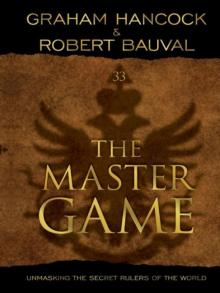 The Master Game: Unmasking the Secret Rulers of the World
The Master Game: Unmasking the Secret Rulers of the World America Before
America Before Entangled
Entangled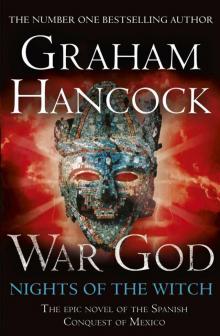 War God: Nights of the Witch
War God: Nights of the Witch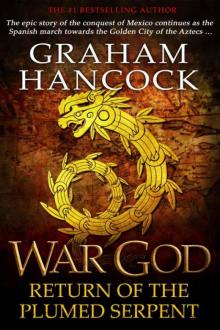 War God: Return of the Plumed Serpent
War God: Return of the Plumed Serpent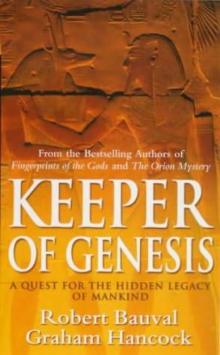 The Message of the Sphinx AKA Keeper of Genesis
The Message of the Sphinx AKA Keeper of Genesis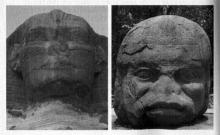 Fingerprints of the Gods
Fingerprints of the Gods The Sign and the Seal
The Sign and the Seal The Mars Mystery: The Secret Connection Between Earth and the Red Planet
The Mars Mystery: The Secret Connection Between Earth and the Red Planet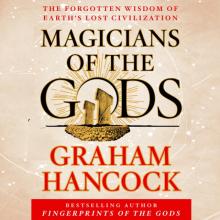 Magicians of the Gods: The Forgotten Wisdom of Earth's Lost Civilization
Magicians of the Gods: The Forgotten Wisdom of Earth's Lost Civilization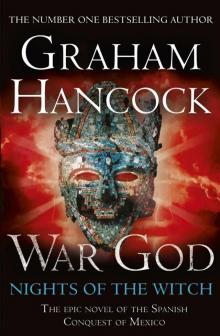 War God
War God Underworld
Underworld The Mars Mystery
The Mars Mystery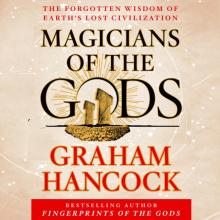 Magicians of the Gods
Magicians of the Gods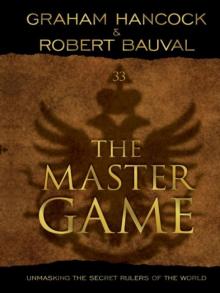 The Master Game
The Master Game